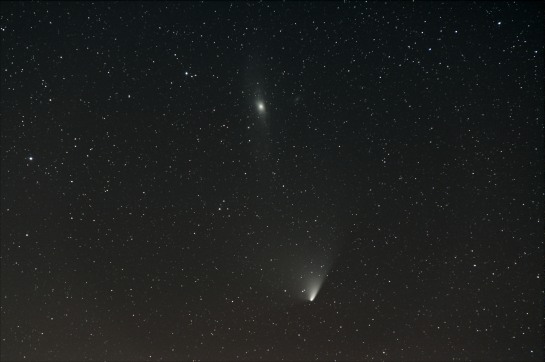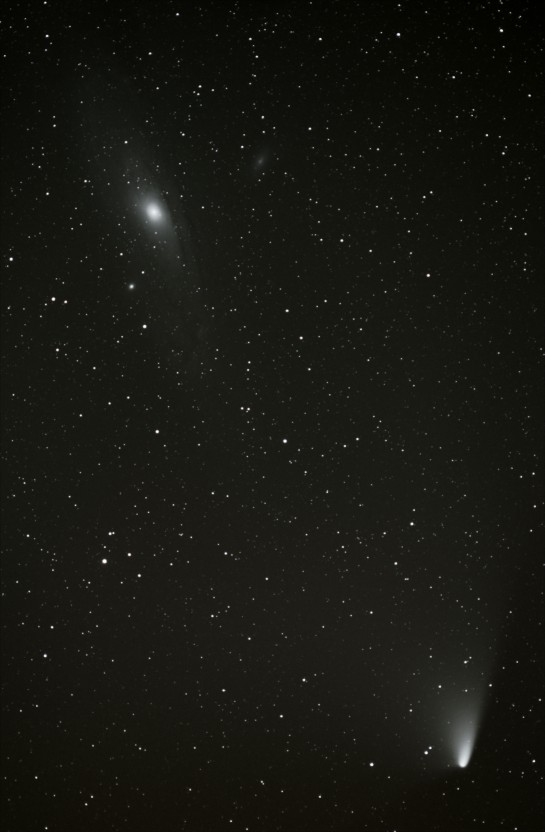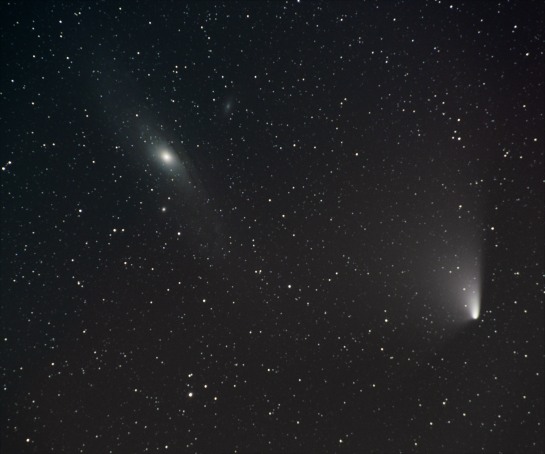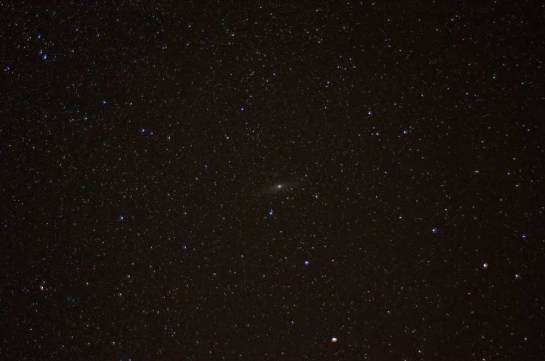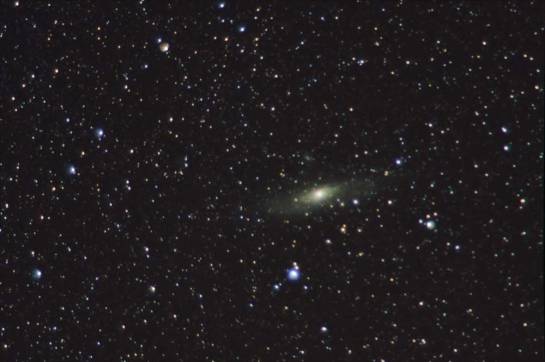When the Cumbrian skies cleared on 1 April we had the opportunity for several nights of catching PANSTARRS in glorious juxtaposition with the Andromeda Galaxy M31.
First up, some test frames on 1 April which turned into a nice capture that I’d had in mind for some time.
With a standard 50mm lens and some judicious cropping, this letterbox format shows Mirach (one of the guide stars used when finding M31: “from Mirach, hop right one star, then again, then down to the fuzzy blob”) with M33 faintly visible on the left, M31 on the right and PANSTARRS making its way in from the bottom.
Quite a windy evening, so I cranked up the ISO to 1600 and took just four good frames at 30 seconds.
On to the following night…
Quite breezy again, so I kept the exposures down at 30 seconds, but on the 200mm lens. 30 frames stacked for a 15 minute total exposure.
PANSTARRS is only about 7 degrees above the horizon here. That presents a whole new set of problems. At this angle, the line of sight goes through about ten times as much atmosphere as at zenith, multiplying the effect of water vapour on the incoming light. From this location, Helsington Church, the view North-West also passes over the lights of Windermere and Ambleside, giving a street light skyglow to the bottom of the frame. One of the beautiful features of PANSTARRS is its fan tail, glowing by reflected sunlight, so any attempt to process out the skyglow tends to eliminate the tail too.
Another shot I had framed in my mind, estimating there would be just enough room in the 300mm frame to put both M31 and PANSTARRS. As the wind had dropped, I could get exposure up to 2 minutes, and grabbed 23 frames of which 20 were acceptable.
Finally on 3 April…
The birthday fairy brought me a polarscope this year, which dramatically reduces the time taken to polar-align the EQ3-2 equatorial mount. In a couple of minutes I can align more accurately than I used to get from 30 to 40 minutes of drift alignment using the camera. Certainly it is good enough for 5 minute exposures at up to 300mm. I must find time to test the alignment with longer focal length. Anyway, this stack of 12 frames at 5 minutes each has cropped nicely. M31 is not as clear as I would have liked (see M31: up to 200mm) but it was too low in the sky for that.
There was another very pleasing alignment on 5 April but the Cumbrian clouds had closed in.

